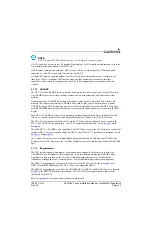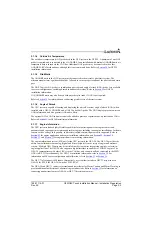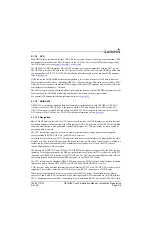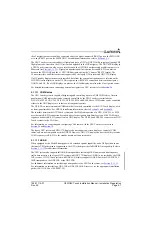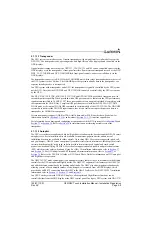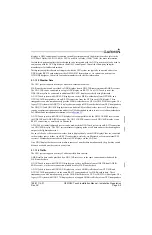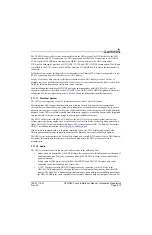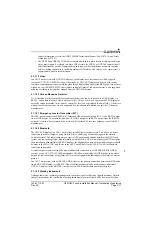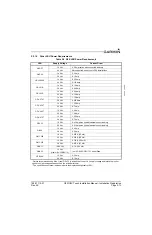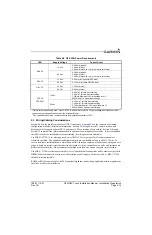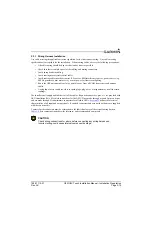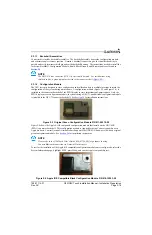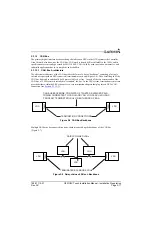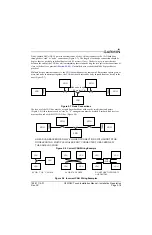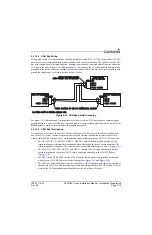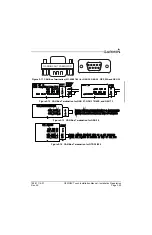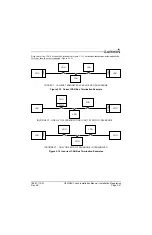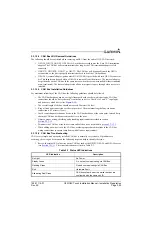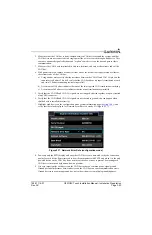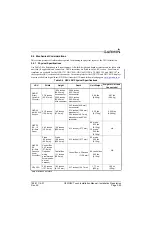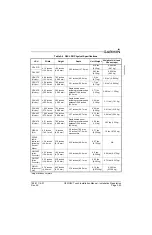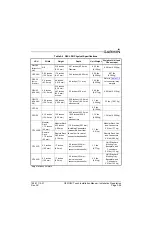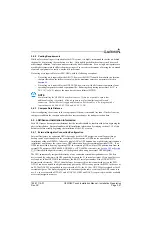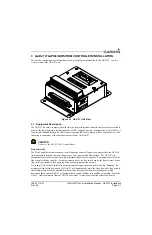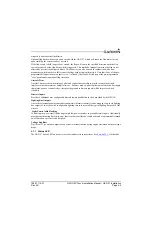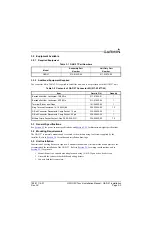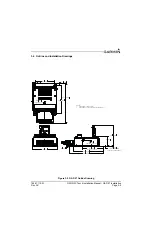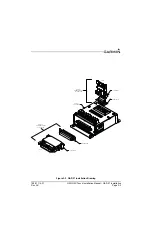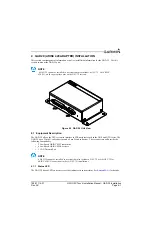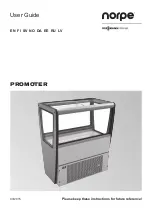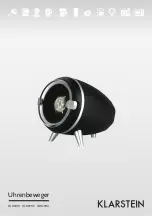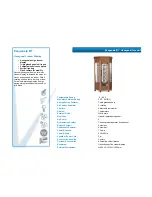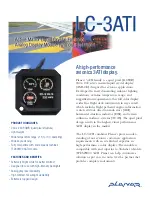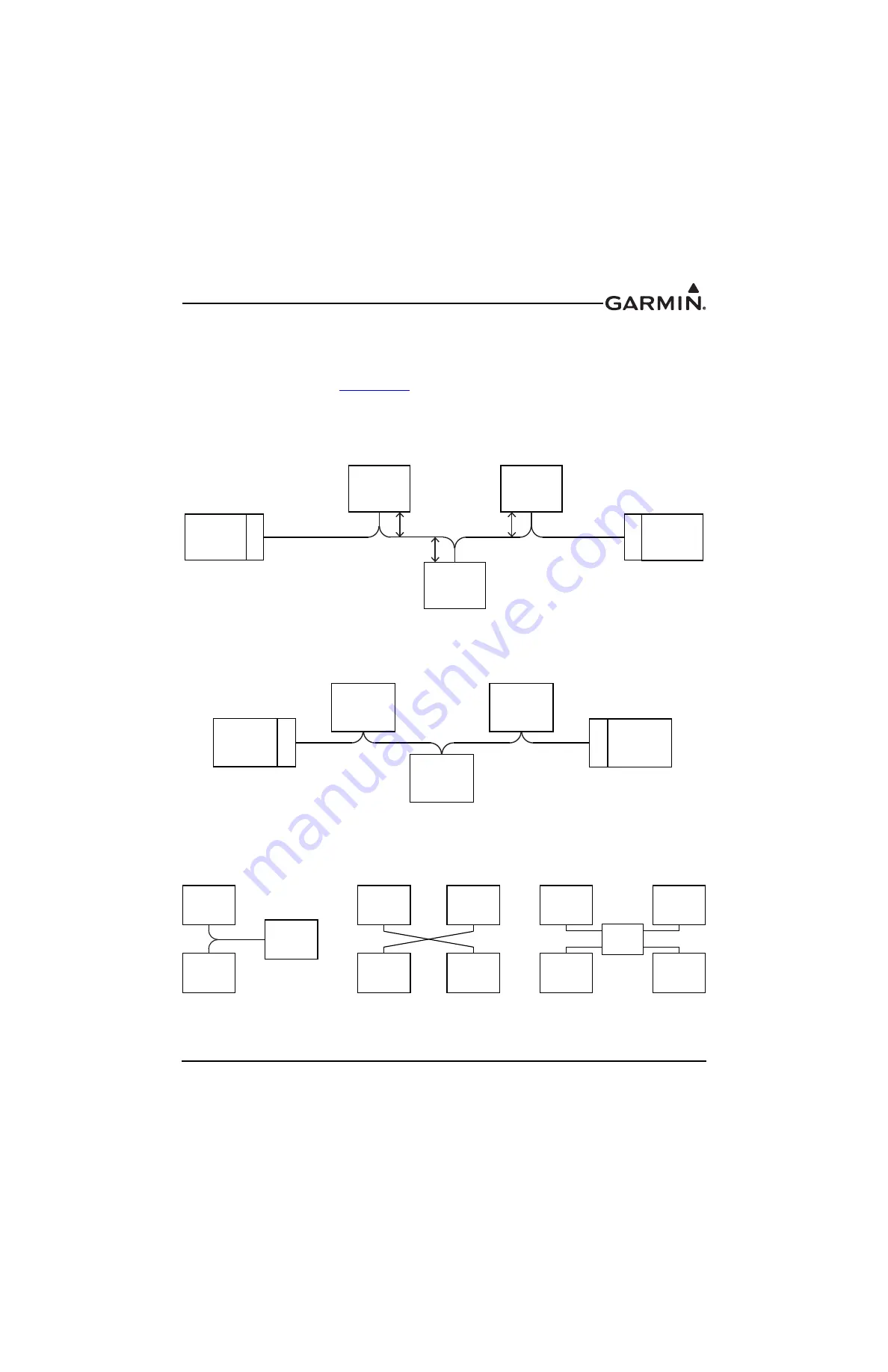
190-01115-01
G3X/G3X Touch Installation Manual - Installation Preparation
Rev. AC
Page 2-18
Daisy-chained LRUs (LRUs not at the extreme ends of the CAN bus) connect to the CAN backbone
through short “stub” or “node” connections (Figure 2-7). The length of each node connection should be
kept as short as possible, and should not exceed 0.3 meters (1 foot). The best way to connect devices
between the ends of the CAN bus while maintaining short stub node lengths is to splice the connections as
close to the device as practical (
). Unshielded wire sections should be kept as short as
practical.
Multiple devices must not connect to the CAN bus backbone at the same point. Rather than splicing two or
more stub node connections together, the CAN bus should instead be daisy chained from one device to the
next (Figure 2-7).
Figure 2-7 Node Connections
The layout of the CAN bus must be a single linear backbone with exactly two distinct end points
(Figure 2-8). Other layouts such as “star” or “Y” arrangements must be avoided. Similarly, hub devices
must not be used with the G3X CAN bus. (Figure 2-9)
Figure 2-8 Correct CAN Wiring Example
Figure 2-9 Incorrect CAN Wiring Examples
LRU
LRU
LRU
LRU
LRU
Max. node length
0.3 meter (1 ft)
TERM
TERM
LRU
LINEAR CAN BACKBONE, DAISY-CHAINED CONNECTIONS WITH SHORT STUB
NODE LENGTHS. MULTIPLE LRUs ARE NOT CONNECTED TO BACKBONE AT
THE SAME LOCATION.
LRU
LRU
LRU
TERM
LRU
TERM
LRU
LRU
LRU
AVOID “T” OR “Y” SHAPE
LRU
LRU
LRU
LRU
AVOID STAR SHAPE
LRU
LRU
LRU
LRU
HUB
DEVICE
DO NOT USE THIRD-PARTY
HUB DEVICES

